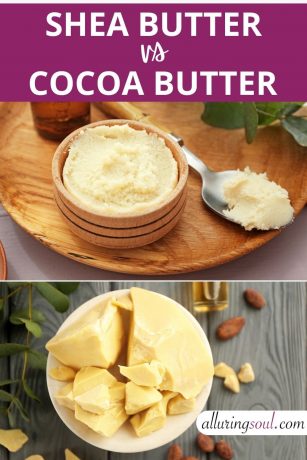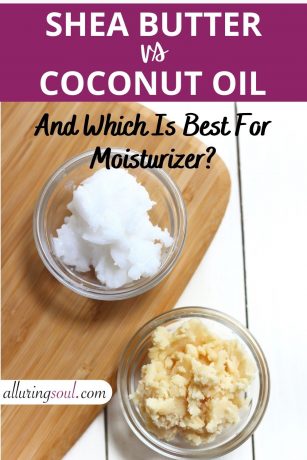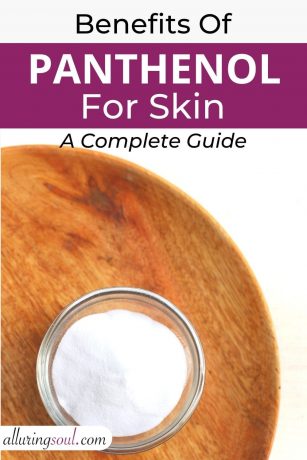Looking for a mild, eco-friendly surfactant for your DIY skincare or haircare recipes? Coco Glucoside might be just what you need. Derived from coconut oil and sugar, this gentle cleanser is known for its ability to create a soft lather without irritating the skin or scalp. It’s perfect for sensitive formulations like facial cleansers, baby washes, and natural shampoos.
In this post, we’ll break down what coco glucoside is, its benefits, and how you can use it in your homemade products.
What Is Coco Glucoside?
- INCI: Coco glucoside
- Charge: Nonionic
- Appearance: Clear to pale yellow, viscous liquid
- Solubility: Water
- pH: 11.5-12.5
- Usage rate: Not specified
Coco glucoside is a mild, nonionic surfactant that is derived from coconut oil and sugar. It has the ability to decrease the surface tension that exists between the oil and water particles. This helps the shampoo or body wash to extract the grease and dirt from the upper layer of skin and allow it to be washed away with water.
Coco glucoside has 51% active surfactant matter with a characteristic smell of detergent. It helps the skincare and haircare products to achieve a gentle and creamy lather quickly and keeps the foam stabilised.
Although coco glucoside can be used in any skin care or hair care product as a primary or secondary surfactant, it functions poorly as a solubilizer. To use it in cosmetic formulations, you have to mix it in the water phase in either a hot or cold process.
What Is Coco Glucoside Made From?
Coco Glucoside is a non-ionic surfactant made by combining:
- Fatty alcohols from coconut oil (primarily lauryl and decyl alcohols)
- Glucose, a simple sugar derived from corn, wheat, or potatoes
The result is a gentle, biodegradable cleanser that creates mild foam and helps other ingredients mix well in formulations. Because it’s plant-derived and free from harsh sulfates, coco glucoside is a popular choice in natural and sensitive-skin-friendly products like shampoos, facial cleansers, and baby washes.
Is Coco Glucoside Made From Coconut?
Yes, coco glucoside is derived from coconut. The oil from coconut is converted to fatty alcohol, which then reacts with glucose to form coco glucoside.
What Is Coco Glucoside Used For In Skincare And Haircare?
The primary role of coco glucoside in skin care or hair care is to act as a surfactant and cleanser. By bringing down the surface tension between the oil and water, it helps to cleanse the skin by removing the grease and dead skin cells that are locked in the pores.
Additionally, coco glucoside has excellent lathering properties. This enhances its cleansing ability and allows the skincare product to spread evenly over a large area.
What Is The pH of Coco Glucoside?
Coco glucoside has a fairly high pH, which is in the range 11.5-12.5. This makes coco glucoside extremely caustic and a poor solubilizer.
Is Coco Glucoside Natural or Synthetic?
Coco glucoside is a natural surfactant. This is because the primary ingredient used in manufacturing coco glucoside is coconut oil. However, it is important to note that although coco glucoside is made from natural substances, the manufacturing process itself is synthetic.
Is Coco-Glucoside A Soap?
No, coco glucoside is not a soap. The chemical definition of soap is that it is an alkali salt. Soap is formed when an alkali combines with a lye. On the other hand, coco glucoside is a surfactant that belongs to the group of alkyl glucosides. It is formed when the fatty alcohol from coconut oil combines with glucose.
What Are The Benefits Of Coco Glucoside For Skin and Hair?
Benefits in Skincare
- Very mild cleanser – Cleans without stripping the skin’s natural oils
- Moisturizing and softening – Leaves skin soft and not tight or dry
- Non-irritating – Safe for sensitive skin and babies
- Boosts foaming – Especially when combined with other surfactants
- Non-comedogenic – Does not clog pores
- Natural origin – Ideal for clean beauty or organic skincare brands
Benefits in Haircare
- Mild cleansing action – Ideal for dry, damaged, frizzy, or color-treated hair
- Sulfate-free alternative – Used in gentle or low-poo shampoos
- Supports curl definition – Especially in curly and coily hair routines
- Reduces scalp dryness – Suitable for those with flaky or irritated scalp
- Can be used in kids’ shampoos – Because of its ultra-mild nature
Is Coco Glucoside Toxic?
Coco glucoside is one of the safest surfactants that are used in cosmetics. It is completely biodegradable, non-toxic, and has no carcinogenic or mutagenic effect on human beings.
Is Coco Glucoside FDA-approved?
Coco glucoside is an FDA-approved surfactant. This ensures that coco glucoside adheres to all the safety standards and can be safely incorporated into skincare formulations.
Is Coco Glucoside A Sulphate?
No, coco glucoside is not a sulphate. Instead, it can be used as a safer alternative to sulphate-based surfactants. Unlike surfactants that contain sulphates like sodium lauryl sulphate(SLS) that are harsh on the skin, coco glucoside is safe for use and keeps the skin smooth and moisturised.
Is Coco Glucoside Vegan?
Yes, Coco Glucoside is a vegan product. Since the base ingredient used in producing coco glucoside is coconut, it makes this surfactant fully plant-based and safe for use in vegan formulations.
Is Coco Glucoside Safe On The Skin?
Coco glucoside is a gentle surfactant and is safe on the skin.
Unlike major sulphate-based surfactants, it does not strip the skin of its natural oils. Coco glucoside keeps the skin moisturised without clogging the pores. In addition to this, it forms a good lather and cleanses the skin effectively.
Is Coco Glucoside Safe For Sensitive Skin?
Coco glucoside, being a mild surfactant, is very suitable for sensitive skin. Unlike other sulphate-based surfactants, it does not irritate the skin or cause any rashes or redness. This makes coco glucoside-based shampoos and body washes an ideal choice for those suffering from eczema or dermatitis.
Is Coco-Glucoside Comedogenic?
Although coconut oil-based products have a tendency to clog the pores on the skin, it is not the case for coco glucoside.
Coco glucoside is deemed to be a non-comedogenic surfactant. It does not accumulate in the pores of the skin and does not cause breakouts. This is because coco glucoside contains the fatty alcohol derivative of coconut oil, which has no comedogenic property.
Is Coco Glucoside Bad For Hair?
No, coco glucoside is not bad for hair.
In fact, coco glucoside is one of the most gentle surfactants available. It is natural and helps to form a gentle, creamy lather that cleanses the scalp and hair without making it dry or frizzy. Additionally, it is also known to moisturise and nourish the hair.
Is Coco Glucoside Drying For The Hair?
No, coco glucoside does not dry out the hair. On the contrary, it helps the strands of hair and the scalp to retain their moisture and look smooth and conditioned after cleansing.
What Is The Difference Between Decyl Glucoside and Coco Glucoside?
| Feature | Coco Glucoside | Decyl Glucoside |
|---|---|---|
| Origin | Made from coconut-derived fatty alcohols + glucose | Made from decyl alcohol (corn or coconut) + glucose |
| Foam | Produces rich, creamy foam | Produces mild, less foamy lather |
| Cleansing Strength | Slightly stronger cleansing | Milder cleansing action |
| Mildness | Mild, but not as mild as decyl glucoside | One of the mildest surfactants available |
| Skin Sensitivity | Suitable for normal to sensitive skin | Ideal for very sensitive or baby skin |
| Viscosity (thickness) | Thicker, can increase product viscosity | Lower viscosity (thinner) |
| pH Range | ~11–12 (requires pH adjustment in formulation) | ~11.5 (also requires adjustment) |
| Usage in Products | Shampoos, facial cleansers, body washes | Baby cleansers, micellar waters, gentle shampoos |
| Biodegradability | Biodegradable | Biodegradable |
Summary:
- Coco Glucoside is better if you want more foam and stronger cleansing power.
- Decyl Glucoside is a better choice for very sensitive skin, babies, or ultra-gentle formulations.
What Can I Substitute For Coco Glucoside?
Coco glucoside is a mild, nonionic surfactant that has good foaming abilities. In skincare products, it can be substituted with caprylyl/capryl glucoside.
Unlike coco glucoside, caprylyl/capryl glucoside has a good solubilizing property. When both surfactants are used together, they work as a solubilizer and a good lathering agent simultaneously.
Is Coco Glucoside The Same As Cocamidopropyl Betaine?
No, coco glucoside is not the same substance as cocamidopropyl betaine. While coco glucoside is a nonionic surfactant, cocamidopropyl betaine is an amphoteric surfactant. Additionally, coco glucoside is made from all-natural elements, while cocamidopropyl betaine has synthetic elements included in it.
- Coco Glucoside is a milder, sugar-derived surfactant — ideal for ultra-gentle, eco-friendly formulas.
- Cocamidopropyl Betaine is a foam-boosting co-surfactant, more commonly used, but may be irritating for some.
If you’re formulating for sensitive skin, babies, or want a 100% natural profile, Coco Glucoside is generally the better choice.
If you’re looking for better foam and performance in a balanced formula, Cocamidopropyl Betaine works well as a secondary surfactant.
Which Is Better: Decyl Glucoside or Coco Glucoside?
Both the surfactants, decyl glucoside and coco glucoside, are mild, non-toxic, and form good foam.
Decyl glucoside lathers faster than coco glucoside. However, the foam from decyl glucoside is unstable and dissolves faster. On the other hand, decyl glucoside has a greater viscosity than coco glucoside and makes skincare products thicker.
Thus, in terms of lather-forming ability, coco glucoside is better than decyl glucoside.
How Do You Store Coco Glucoside?
Coco glucoside should be stored in a cool, dark place without any exposure to direct sunlight. Under these conditions, coco glucoside can last for two years.
Is Coco Glucoside Amphoteric?
No, coco glucoside is not an amphoteric surfactant.
Amphoteric surfactants are those that develop a positive charge in acidic solutions and a negative charge in alkaline solutions. However, coco glucoside is a nonionic surfactant, meaning that it develops no charge in either acidic or basic solution.





